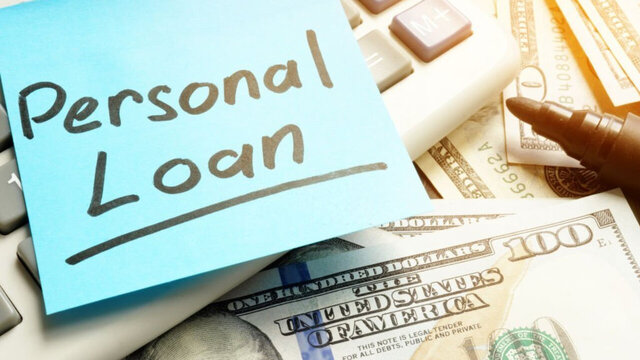Personal loans are unsecured loans offered by financial institutions based on factors such as job history, creditworthiness, economic status, profession, and credit history. Personal loans, also known as consumer loans, are multi-purpose loans that can be used to cover any of your urgent requirements. A personal loan enables you to acquire money to cover personal expenses and then repay it over time. Personal loans are a type of installment debt that enables you to borrow money in one big amount. For example, you can use a personal loan to pay for:
- Debt consolidation
- Medical bills
- Moving expenses
- Home renovations or repairs
- Funeral costs
- Wedding expenses
- Vacation costs
- unexpected expenses.
- Borrow

Types of Personal Loans
- Unsecured personal loans
- Fixed-rate loans
- Variable-rate loans
- Co-signed and joint loans
- A personal line of credit
- Secured personal loans
- Debt consolidation loans
- Buy now, pay later loan
1. Unsecured personal loans
The majority of personal loans are unsecured, which means they are not secured by assets such as your home or vehicle. Since they are riskier for lenders, they can demand a slightly higher annual percentage rate, or APR. The APR represents the overall cost of borrowing, which includes the interest rate as well as any fees.
2. Secured personal loans
Secured loans are secured by collateral that the lender can confiscate if you do not repay the loan. Home loans and vehicle loans are two examples of secured loans.
3. Fixed-rate loans
Most personal loans have fixed rates, which means your interest rate and monthly payments (also known as installments) will remain the same for the duration of the loan.
4. Variable-rate loans
Loans with variable interest rates are often pegged to a benchmark rate that is determined by the issuing bank. Your loan’s interest rate, as well as your monthly payments and the amount you will spend on interest throughout the life of the loan, might go up or down depending on how the benchmark rate changes.
5. Debt consolidation loans
A debt consolidation loan will combine all of your existing debts into a single new loan, which will result in just one payment due each month. If the annual percentage rate (APR) of the loan is lower than the rates on your previous debts, then consolidating your debts is a smart decision since you will save money on interest payments.
6. Co-signed and joint loans
Borrowers who require a lower interest rate or who are unable to qualify for a personal loan on their own can consider applying for a co-signed or joint loan instead.
7. A personal line of credit
Revolving credit is regarded as a personal line of credit, and it’s more comparable to a credit card than it is to a personal loan. You will not get a large chunk of money all at once; rather, you will be granted access to a credit line from which you will be able to draw money on an as-needed basis. You only end up paying interest on the amount that you actually borrow.
8. Buy now, pay later loan
With a loan from a “buy now, pay later” service, you can break up the payment for an online purchase into many smaller portions. At the time of purchase, you sign up for an account with a BNPL app, make a partial payment, and then give the app permission to charge you the remaining amount of the purchase over a period of time, often every two weeks.
How To Get A Personal Loan In 5 Easy Steps?
A personal loan often does not need any kind of security or collateral, and the repayment conditions are quite flexible.
The process of obtaining a personal loan can be broken down into the following five steps.
Step 1: Determine your objective
Determine the reason you need a personal loan as well as the amount you will require. For instance, you could want a loan in order to pay for your wedding or to make improvements to your property. And it’s possible that all you’ll need is Rs. 1 lakh or Rs. 10 lacks.
Step 2: Determine if you are eligible for a loan
After you have determined how much money you need, you should also determine whether or not you are eligible to get it.
Step 3: Determine the amount of each month’s installment
To determine how much you need to pay toward your personal loan each month, you may do the calculation using an online EMI calculator. As with the Personal Loan EMI calculator, you have the capability to change the interest rate as well as the term to correspond with your monthly income.
Step 4: Proceed to the bank’s office
You can submit an application for a personal loan with the bank in a number of different ways, including via NetBanking, online on the bank’s website, using an automated teller machine, or by visiting a branch location.
Step 5: Submit documentation
The next step is to find out what kinds of documentation are necessary for a personal loan. In most cases, you will be required to provide documentation of your income (such as bank statements, payslips, or tax returns), proof of your residence, and confirmation of your identity. You will need to provide the bank with copies of the paperwork related to your personal loan.
Conclusion
As a result of what we have seen, taking out a personal loan is a suitable option when there is a need to meet additional funding requirements. However, prior to settling on any decision about a personal loan, it is a good idea to look into the service costs, foreclosure fees, and hidden expenses that are involved with this. In this manner, we are able to evaluate the advantages and disadvantages offered by several lenders and select the plan that best meets our requirements and is within our budget.
